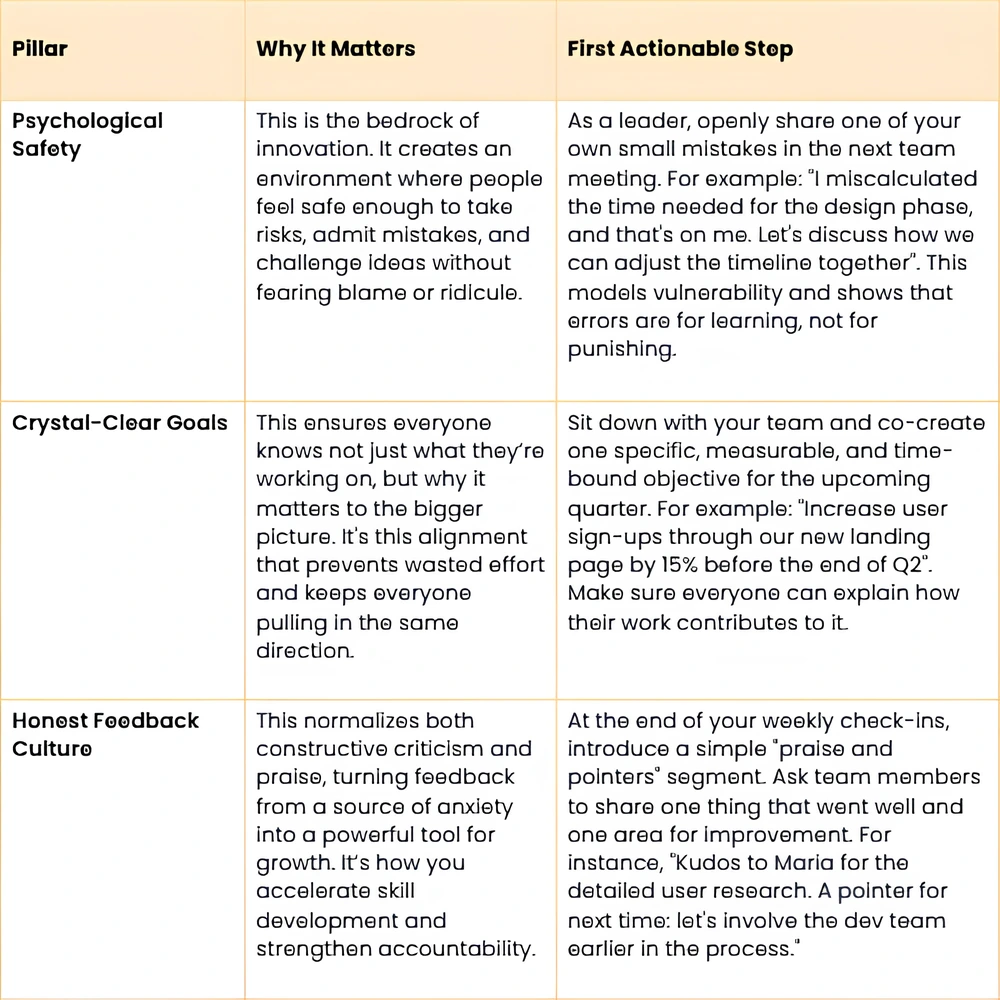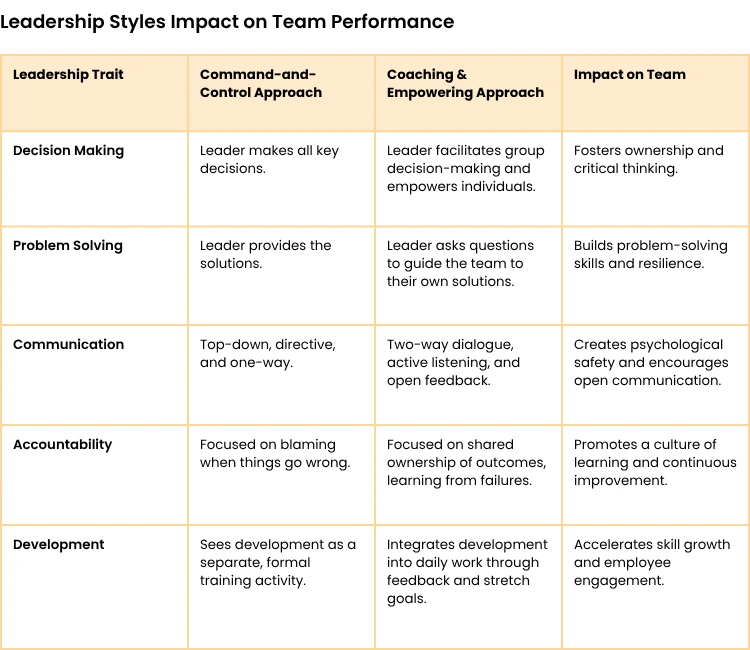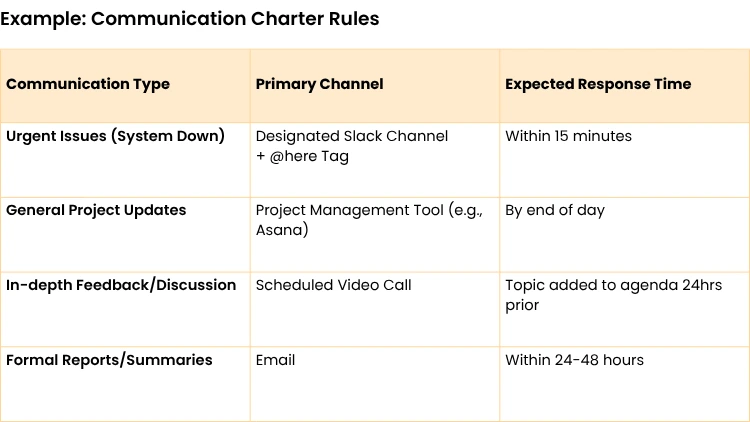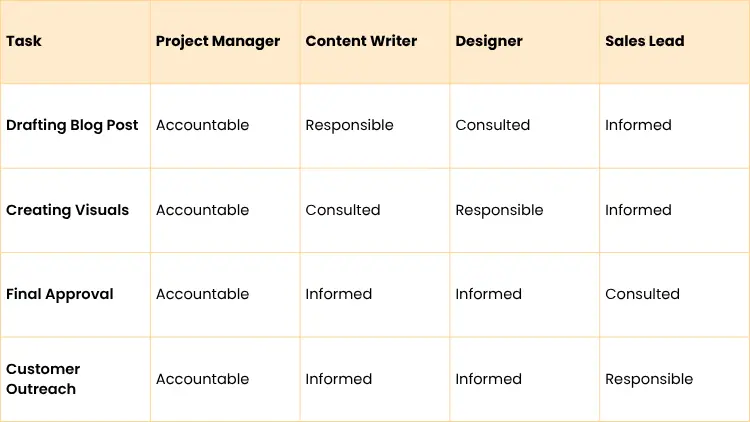How to Build High Performing Teams in Organizations

Building a high-performing team isn't about just throwing a bunch of all-stars into a room and hoping for the best. It’s about intentionally creating an environment where everyone can thrive together.
When you get right down to it, this boils down to three key ingredients: genuine psychological safety, goals that are crystal clear, and a culture of honest feedback.
Jump To Section

Earn As You Learn
Earn 25% commission when your network purchase Uplyrn courses or subscribe to our annual membership. It’s the best thing ever. Next to learning,
of course.
What High Performing Teams Actually Do Differently
Let's cut through the noise. A common mistake leaders make is assuming that a group of talented people will automatically morph into a high-performing team. But raw talent isn't enough to get you there.
In fact, a global study revealed that only about 30% of workplace teams are actually considered high-performing. This isn't an accident; it shows that success requires a deliberate effort to build a truly collaborative culture.
The real difference between an average group and an exceptional one isn't found in grand, sweeping gestures. It's in the underlying structure and the small, consistent behaviors that build momentum day after day.
The Foundational Pillars of Performance
High-performing teams are built on a few non-negotiable pillars. Think of these as the operating system for how the team interacts, innovates, and pushes through challenges. They aren't just corporate buzzwords; they're active, living parts of the team's DNA.
To get a clearer picture, let's break down these pillars into their core components. The table below gives a quick overview of what they are, why they're so critical, and a simple first step you can take to start implementing them.
The Three Pillars of High-Performance Teams
Starting with these actionable steps can begin the shift from simply managing a group to truly leading a team.
The biggest trap leaders fall into is confusing a collection of high-achievers with a high-performing team. One has individual accountability; the other has shared ownership over collective success.
This distinction is everything. Creating an environment of shared ownership demands a different kind of leadership, one that prioritizes employee engagement in your organizations. While we’re laying out a roadmap here, it’s always valuable to see other perspectives on fixing common approaches to building high-performing teams.
This guide will give you practical strategies to build these pillars from the ground up.

Creating a Culture of Psychological Safety
Before a team can even think about hitting peak performance, it needs a solid foundation of trust. We're not talking about everyone being best friends, but something much more fundamental: an environment where people feel safe enough to be vulnerable. This is the heart of psychological safety—the shared belief that you won’t get punished or humiliated for speaking up with ideas, questions, concerns, or mistakes.
Without it, people hide their mistakes. They hesitate to ask clarifying questions. They keep brilliant, game-changing ideas to themselves because they're afraid of looking incompetent.
But when psychological safety is in the air, you see innovation, honesty, and resilience start to flourish. It’s the single most critical ingredient for turning a group of talented individuals into a truly cohesive unit.
Model Vulnerability From the Top
Psychological safety always starts with leadership. Your team members won't stick their necks out if they don't see you doing it first. As the leader, you set the tone by showing everyone that it's okay not to have all the answers and that missteps are just part of the growth process.
This means you have to get comfortable admitting when you're wrong or when you just don't know something.
- Practical Example: Instead of projecting bulletproof certainty, try saying, "That's a great question. My initial thought is X, but I'm not the expert here. Let's dig into the data together". Or even better, "You know what, I made a mistake in my initial assessment of this project. Let's reassess this as a team."
This simple act of vulnerability completely changes the dynamic. It shifts the focus from judgment to collective problem-solving and signals to your team that perfection isn't the goal—progress is.
Reframe Failure as a Learning Opportunity
In teams that lack psychological safety, a failed project or a missed deadline immediately kicks off the blame game. High-performing teams, on the other hand, view these moments as valuable data points. The goal isn't to find a scapegoat; it's to separate the outcome from the individual and dissect the process.
- Actionable Insight: The next time a project misses its mark, schedule a "post-mortem" meeting with one ground rule: no finger-pointing. Structure the discussion around three questions: 1. What did we expect to happen? 2. What actually happened? 3. What will we do differently next time? This reframes the entire narrative around failure.
A culture of safety replaces blame with curiosity. When an experiment doesn't work, the first question isn't who to blame, but what the results can teach us. This mindset is the engine of innovation.
Real-World Scenario: Let's say a marketing team launches a new ad campaign that completely bombs.
- Unsafe Team: The manager publicly grills the campaign lead about their decisions. This creates defensiveness and ensures no one will want to try a risky new idea ever again.
- Safe Team: The manager calls a blame-free "retrospective" meeting. The whole team dives into the data, discusses which assumptions were off, and brainstorms adjustments for the next campaign. The failure is transformed into a strategic lesson.
Run More Inclusive and Respectful Meetings
Meetings are a microcosm of your team's culture. They can either reinforce hierarchy and fear or they can foster open dialogue and genuine collaboration. As a leader, your job is to be a facilitator who ensures all voices are heard, not just the loudest or most senior ones.
Establishing clear ground rules for debate is a game-changer. This isn't about tiptoeing around disagreements; it's about making sure conflict stays constructive and focused on ideas, not people. If you're looking to build a stronger foundation, it's worth diving deeper into the prominence of psychological safety and its real-world impact.
Here are a few actionable insights for your very next meeting:
- Actively solicit input: Make a point to directly ask quieter team members for their thoughts. Try something like, "Sarah, we haven't heard from you yet. What's your perspective on this?"
- Establish rules for debate: Before a brainstorm, set a simple guideline: "We attack ideas, not people. All feedback needs to be constructive."
- Use round-robin techniques: Go around the room and give each person two uninterrupted minutes to share their thoughts. This simple technique prevents the usual suspects from dominating the entire conversation.
When you consistently apply these behaviors, you create a powerful feedback loop. Team members see their contributions are valued and that it's safe to speak up, which in turn fuels the creative energy your team needs to become truly high-performing.

Moving from Manager to Performance Coach
Great leaders are the secret sauce behind any high-performing team, but their role often looks a lot different than what we traditionally think of as "management". The most effective leaders we've seen have all made a crucial shift: they’ve moved from being task-focused managers to becoming empowering performance coaches.
Instead of directing every single move, their energy goes into clearing roadblocks and unlocking the incredible potential that's already inside each team member.
This isn't just a change in title; it's a completely different way of thinking. A manager assigns tasks and checks boxes. A coach, on the other hand, develops people. They find a way to align an individual's unique strengths with the team's bigger goals and deliver feedback that actually inspires growth, not fear. This style of leadership is directly tied to creating teams that knock it out of the park.
Ditching Command-and-Control for Coaching
The old way of leading—that classic "command-and-control" model—is built on hierarchy and top-down authority. It’s a world where leaders have all the answers, delegate tasks with rigid instructions, and measure success by how well you followed the process. Sure, it can produce predictable results, but it absolutely crushes innovation and disempowers the very people you hired for their skills.
The modern "coaching and empowering" approach flips this script entirely. It’s built on a foundation of trust, autonomy, and mutual respect. A leader in this model asks powerful questions instead of barking orders. They foster genuine collaboration and see their main job as being a supporter and a facilitator.
The coaching approach is what builds the high autonomy and satisfaction that are non-negotiable for innovative, high-performing teams.
Practical Steps to Become a Performance Coach
Making this shift happen requires some intentional changes in your day-to-day interactions. It starts with the way you hand off work and carries all the way through to how you navigate tough conversations. The goal is to build a sense of ownership, not just grudging compliance.
Here are a few actionable ways you can start leading more like a coach today:
- Delegate Outcomes, Not Tasks: This is a big one. Instead of giving a team member a detailed to-do list, define the desired outcome and let them figure out the "how". For instance, rather than saying, "Create five social media posts using this exact template", try this: "Our goal is to boost engagement on this topic by 15% this week. What are your ideas for how we can make that happen?" That simple tweak transfers ownership and sparks creative problem-solving.
- Ask More, Tell Less: When a team member comes to you with a problem, fight that urge to jump in with the solution. Instead, use coaching questions to guide their own thinking. For example, use questions like, "What have you already tried?" or "What's one small step you could take to move forward on this?" or "What does success look like here?"
- Frame Feedback for Growth: Good feedback should always be forward-looking and developmental. Ditch any language that sounds like a personal critique. Instead of dwelling on past mistakes, frame the conversation around what success looks like next time.
Practical Example for Tough Feedback: "I'd like to talk about the project presentation. The data was solid, but I think we can make your delivery even more impactful next time. What are your thoughts on how we can better prepare for the Q&A section to really showcase your expertise?"
This simple reframe turns a potentially tense critique into a collaborative strategy session focused on building skills. It’s a game-changer.
The impact a leader has on their team's spirit is massive. Gallup’s research found that managers account for a staggering 70% of the variance in team engagement. That proves your leadership quality is the single biggest factor in your team's motivation and sense of ownership.
The table below breaks down how these different leadership traits play out in the real world.
As you can see, the coaching approach consistently cultivates the environment where high-performing teams are born and sustained. It’s not about having all the answers; it’s about creating a space where your team can find them.
For anyone looking to really master this style, this guide on the differences between being a manager versus being a coach offers even more detailed strategies. Making this shift is one of the most powerful things you can do to build a team that not only delivers results but truly thrives.

Setting Clear Goals and Communication Rhythms
A high-performing team can have all the psychological safety in the world, but without a clear destination, they’re just spinning their wheels. True alignment is the engine that drives progress. It ensures every single person is pulling in the same direction, not just working hard in isolation.
This is where clear goals and consistent communication become non-negotiable. It’s about making sure everyone understands not just what they’re doing, but why their individual work is critical to the bigger picture.
Moving Beyond the To-Do List with OKRs
Too many teams get stuck in a task-based mindset, which breeds a culture of just checking boxes. To really build a high-performing team, you have to shift the focus from simple output to meaningful outcomes. This is exactly where frameworks like Objectives and Key Results (OKRs) shine.
Practical Example:
- Objective: Become the go-to resource for our industry this quarter.
- Key Results:
- Increase organic search traffic by 40%.
- Secure three guest features in top industry publications.
- Publish one comprehensive research report.
The real power of OKRs is how they connect the day-to-day grind directly to the company's mission. Instead of just completing tasks, the team becomes laser-focused on moving the needle on metrics that truly matter.
Actionable Insight: A common mistake is creating way too many OKRs, which just dilutes focus. A truly high-performing team rallies around 2-3 core objectives per quarter. This ensures everyone's energy is concentrated on what will make the biggest impact.
Making Goals Actionable with SMART Criteria
While OKRs provide the "why", the SMART framework ensures the "what" is grounded in reality. Before you finalize any goal or key result, run it through this simple checklist to strip away any ambiguity.
- Specific: Is the goal crystal clear? "Improve customer satisfaction" is fuzzy. "Increase our Net Promoter Score (NPS) from 45 to 55" is specific.
- Measurable: How will you track your progress? For the NPS goal, you will use quarterly customer surveys.
- Achievable: Is the goal realistic given your current resources and timeline? A 10-point jump is ambitious but possible; a 50-point jump is not.
- Relevant: Does this goal directly support the broader team and company objectives? Improving NPS directly relates to company-wide goals of customer retention.
- Time-bound: What's the deadline? "By the end of Q3" creates genuine urgency and accountability.
Using this framework stops you from setting vague, unactionable goals that leave your team wondering what success actually looks like.
Establishing a Communication Charter for Hybrid Teams
In a remote or hybrid world, you can't just rely on hallway conversations to keep everyone on the same page. A team communication charter is a simple but incredibly powerful document that sets clear expectations for how, when, and where your team communicates.
This isn't about creating more bureaucracy; it's about reducing noise and making communication more intentional.
Actionable Insight: Create this charter as a collaborative exercise with your team. This gives everyone a sense of ownership and eliminates the constant stress of wondering, "Should this be an email or a Slack message?" It ensures the right conversations happen in the right places.
Finally, the rhythm of your check-ins is absolutely crucial. A weekly meeting should never be a status report that could have been an email. Instead, structure it to focus on roadblocks, brainstorming, and finding solutions. Before you hold your next one, you might want to check out this guide that explains why you should never underestimate the value of a great meeting to make these sessions far more impactful. A well-run meeting reinforces goals, strengthens communication, and keeps the entire team moving forward, together.

Navigating Team Dynamics and Driving Collaboration
Once you've got solid leadership and clear goals, the real work begins: managing the messy, human side of things. High-performing teams are never made up of clones who think and act alike. Their magic comes from harnessing that diversity, not squashing it.
This is what separates a team that just clocks in from one that genuinely gels. You have to juggle different personalities, communication styles, and cultural backgrounds to create a space where people truly want to collaborate.
Turning Conflict into a Catalyst for Growth
Let's be clear: disagreements are going to happen. In fact, you should be worried if they don't. A team with zero conflict is usually a team where people are too scared to speak their minds. The goal is to encourage constructive conflict—where ideas and processes are debated fiercely—while stamping out personal, destructive attacks.
- Actionable Insight: When a debate gets heated, act as a moderator. Re-center the conversation by saying, "Let's pause. Both points are valid. Our goal is to find the best solution for the project, not to win an argument. What's one piece of data we could look at to help us decide?" This reframes the conflict as a shared problem to solve.
The point of resolving conflict isn’t to crown a winner. It's to blend different perspectives to find the best possible solution, which is almost always better than what any one person could come up with alone.
By showing your team how to disagree with respect, you teach them that challenging an idea isn't the same as challenging a person. For a deeper dive, this guide on how to resolve conflicts in your teams gives you a practical playbook for turning arguments into breakthroughs.
Establishing Crystal-Clear Roles and Responsibilities
Want to see collaboration grind to a halt? Let ambiguity take over. When nobody's sure who owns what, tasks get dropped, work gets duplicated, and resentment starts brewing. Clearly defined roles are the perfect antidote, creating a powerful sense of ownership for everyone involved.
Every single person on your team should be able to answer these three questions without hesitation:
- What am I personally responsible for delivering?
- Who do I need to work with to make it happen?
- How does my work directly support our team's mission?
This kind of clarity is even more critical for remote or globally distributed teams, where miscommunication can happen in an instant. Research across 831 companies revealed that employees spend an average of 54% of their work time in teams. To make that massive chunk of time count, everyone has to know their position on the field. You can read the full study on how teams operate globally to see just how vital clear structures are.
Running a Roles and Responsibilities Workshop
One of the best ways we’ve found to nail down this clarity is by running a "roles and responsibilities" workshop using a RACI matrix. It's a surprisingly simple tool that clarifies who does what for every key task, making sure nothing ever slips through the cracks.
The RACI framework breaks down involvement into four distinct roles:
- Responsible: This is the person (or people) actually doing the hands-on work.
- Accountable: The one person who has the final say and owns the outcome. There can only be one!
- Consulted: The subject matter experts you bring in for their input or advice.
- Informed: The people you need to keep updated on progress, but who aren't directly involved.
Practical Example: A Marketing Campaign Launch
Imagine mapping this out together in a workshop. It forces everyone to get on the same page and replaces assumptions with a single source of truth.
The team walks away knowing exactly what's expected of them, which is a huge boost for both efficiency and morale. This one exercise can completely change your team’s dynamic, swapping confusion for confident, accountable action.

Frequently Asked Questions About High Performing Teams
Even with the best game plan, questions always come up when you're trying to build a stellar team. Let's tackle some of the most common hurdles leaders face, reinforcing the big ideas we've covered.
What Is the Single Most Important Factor?
If we had to pick just one thing, it's psychological safety. Hands down. It’s the bedrock that makes everything else—from candid feedback to setting audacious goals—actually stick.
Without that feeling of safety, people keep their best ideas to themselves, hide their mistakes, and shy away from the healthy debates that lead to breakthroughs. As a leader, creating this environment is your number one job.
- Practical Example: Instead of just saying "my door is always open", model a little vulnerability. In your next team meeting, talk about a small, professional mistake you made and what you learned. Something like, "I totally misjudged the timeline on that last project, and here's how I'm adjusting for the next one" builds more trust than a dozen generic reassurances.
How Long Does It Take to Build a High Performing Team?
We wish there was a magic number, but there isn't. The timeline really depends on where your team is starting from, the broader company culture, and how dedicated you are as a leader. This is an ongoing commitment, not a one-off project.
That said, you can look for key milestones. For a new or average team that you're actively coaching, you can often see a real shift in three to six months. If you're turning around a team with some deep-seated issues, you might be looking at a year or more.
Actionable Insight: Stop looking for a finish line. Instead, focus on small, consistent wins. Progress is iterative. Celebrate the first time someone speaks up with a dissenting opinion or when you see one teammate proactively help another without being asked. Those are the real signs you're on the right track.
How Do You Measure Team Performance Beyond Just Metrics?
Sales figures and project deadlines only show you one part of the picture. To truly understand your team's strength, you need to look at the qualitative signs of its health and future potential.
- Actionable Insight: Use regular, informal check-ins or quick, anonymous pulse surveys to ask targeted questions:
- On a scale of 1-10, how confident are you in our team's ability to meet its goals?
- Do you feel you can take a risk or suggest a new idea without fear of negative consequences?
- How clear are you on what success looks like for our current project?
Paying attention to these answers gives you a much richer, more accurate sense of how your team is really doing. Nurturing these qualities is a huge part of great performance management, and you can dive deeper in this article on effective strategies for performance management.
Can a High Performing Team Have Conflict?
Not only can they, they absolutely should. The crucial difference is that top teams engage in healthy, constructive conflict, not toxic personal attacks. This kind of debate is always about the idea, the process, or the strategy—never the person.
In fact, a total lack of disagreement is a massive red flag. It usually signals that psychological safety is so low that nobody feels comfortable challenging the status quo.
- Real-World Scenario: Let's say two engineers have different ideas about the best way to build a new feature.
- On a low-performing team: This might devolve into a personal feud, leading to resentment, stubbornness, and a stalled project.
- On a high-performing team: They'll debate the pros and cons openly, pull in data, and ask for other perspectives to find the best path forward. The disagreement ultimately makes the final product stronger.
Your job as a leader is to create the space for these debates, keep them respectful, and help guide the team to a decision everyone can get behind. For more on this, a great collection of comprehensive business resources can provide extra tools and frameworks to empower your team.
Ready to take your leadership to the next level and build a team that truly excels? Uplyrn offers expert-led courses designed to turn managers into inspiring coaches. Explore our courses today and start your journey toward creating a genuinely high-performing team.


Leave your thoughts here...
All Comments
Reply